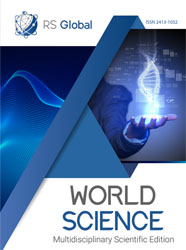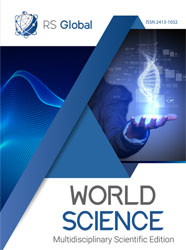CHOICE IN FAVOR OF TRIMETAZIDINE. ANALYSIS OF A CLINICAL CASE
Abstract
Cardiovascular diseases (CVD) are the leading cause of death and disability among adults in the world. The key position in the structure of causes of death from CVD is occupied by coronary heart disease (CHD), the most common form of which is stable angina. The goals of treatment for patients with chronic angina should be to relieve symptoms and reduce mortality. This will allow patients to feel better and live longer. The traditional hemodynamic approach to the treatment of CAD is based on the belief that increasing oxygen supply and decreasing cardiomyocyte oxygen demand improves symptoms. However, clinical trial data demonstrate that about a third of patients, despite antianginal therapy, continue to experience anginal pain. Traditional tactics for managing patients with stable angina usually involve the use of drugs that affect circulatory parameters (heart rate, blood pressure). The article presents a clinical case demonstrating the effectiveness of trimetazidine monotherapy in stable coronary artery disease, when the use of first-line drugs (beta blockers, calcium antagonists and nitrates) is not possible. Trimetazidine modulates cardiac metabolism without changing hemodynamic functions, so its use in this clinical situation is optimal. Modulators of cardiac metabolism open the way to a deeper understanding of CAD and its general clinical manifestations as an energy disorder, not just an imbalance between the demand and supply of oxygen and metabolites
References
Roth G.A., Mensah G.A., Johnson C.O., et al. Global burden of cardiovascular diseases and risk factors, 1990 2019: Update from the GBD 2019 study. J. Am. Coll. Cardiol. 2020; 76 (25): 2982–3021.
Huang K.S., Guha-Sapir D., Tao Q.L., et al. Disability-Adjusted Life Years (DALYs) due to Ischemic Heart Disease (IHD) associated with natural disasters: a worldwide population-based ecological study. Global Heart. 2021; 16 (1): 30.
10. Rosano G.M., Spoletini I., Vitale C. Evaluating the metabolic approach to treatment of diabetic coronary patients. IJC Metabolic & Endocrine. 2013; 1: 4–6.
Guarini G., Huqi A., Morrone D., et al. Trimetazidine and other metabolic modifiers. Eur. Cardiol. 2018; 13 (2): 104–111.
Jaswal J.S., Keung W., Wang W., et al. Targeting fatty acid and carbohydrate oxidation – a novel therapeutic intervention in the ischemic and failing heart. Biochim. Biophys. Acta. 2011; 1813 (7): 1333–1350.
Stanley W.C., Recchia F.A., Lopaschuk G.D. Myocardial substrate metabolism in the normal and failing heart. Physiol. Rev. 2005; 85 (3): 1093–1129.
Fragasso G., Perseghin G., De Cobelli F., et al. Effects of metabolic modulation by trimetazidine on left ventricular function and phosphocreatine/adenosine triphosphate ratio in patients with heart failure. Eur. Heart J. 2006; 27 (8): 942–948.
Peng S., Zhao M., Wan J., et al. The efficacy of trimetazidine on stable angina pectoris: a meta-analysis of randomized clinical trials. Int. J. Cardiol. 2014; 177 (3): 780–785.
Vitale C., Spoletini I., Malorni W., et al. Efficacy of trimetazidine on functional capacity in symptomatic patients with stable exertional angina – the VASCO-angina study. Int. J. Cardiol. 2013; 168 (2): 1078–1081.
Danchin N., Marzilli M., Parkhomenko A., et al. Efficacy comparison of trimetazidine with therapeutic alternatives in stable angina pectoris: a network meta-analysis. Cardiology. 2011; 120 (2): 59–72.
Gao D., Ning N., Niu X., et al. Trimetazidine: a meta-analysis of randomised controlled trials in heart failure. Heart. 2011; 97 (4): 278–286.
El-Kady T., El-Sabban K., Gabaly M., et al. Effects of trimetazidine on myocardial perfusion and the contractile response of chronically dysfunctional myocardium in ischemic cardiomyopathy: a 24-month study. Am. J. Cardiovasc. Drugs. 2005; 5 (4): 271–278.
Knuuti J., Wijns W., Saraste A., et al. 2019 ESC Guidelines for the diagnosis and management of chronic coronary syndromes. Eur. Heart J. 2020; 41 (3): 407–477.
Views:
305
Downloads:
82
Copyright (c) 2024 K.V. Vovk, L.L. Sherstiuk, O.O. Vlasenko, N.V. Shumova, O.H. Reznichenko, H.S. Kratenko

This work is licensed under a Creative Commons Attribution 4.0 International License.
All articles are published in open-access and licensed under a Creative Commons Attribution 4.0 International License (CC BY 4.0). Hence, authors retain copyright to the content of the articles.
CC BY 4.0 License allows content to be copied, adapted, displayed, distributed, re-published or otherwise re-used for any purpose including for adaptation and commercial use provided the content is attributed.














